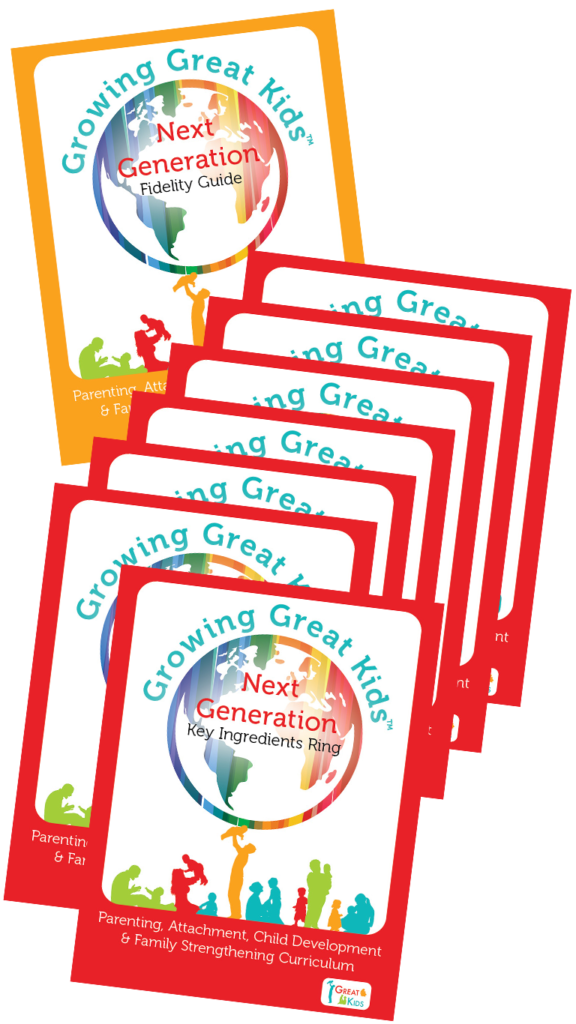 | | | | About the Author Michelle Miller is a Product Development Specialist at Great Kids. Prior to joining the Product Development team, Michelle worked for three years as a Great Kids trainer. Before that, she worked as a trainer, supervisor, and home visitor with a Healthy Families program in Middle Tennessee. Outside of work, she enjoys spending time with her three adult children and doing anything outdoors, especially kayaking. |
Since I moved into my own home several years ago, the season I look forward to most is Spring. The previous owner left many lovely plants, trees, and bushes, including a coral azalea that brightens the view outside my office window for a few brief weeks each year.
However, this past Spring, just as everything was turning from gray to green, a late burst of winter weather arrived with freezing temperatures. Night after night, for a week, I did my best to cover everything with sheets. Sadly, it wasn’t enough, especially for the azalea. After the trauma of the cold spell, all the green leaves and promising first buds browned and dropped away.
For a while, I thought the whole bush was a goner. I called a gardener friend to see if I should plan to replace it. They told me to give it more time. They said that since this azalea had been here awhile, it was well-established—and should be more resilient, having what it needs to come back.
This idea of being well-established and having what it needs to come back got me thinking about childhood trauma and how not all children have what they need to grow resilient.
Although, in the field of child development, we often talk about the importance of the first three years of life,we don’t often talk about or explain the reasons why. Research tells us, however, that when we understand why something is important, we are much more engaged and motivated in learning and practicing new information.
This understanding of the “why” may be the reason that the Adverse Childhood Experience studies have profoundly impacted our understanding of the importance of protecting children in early childhood.
Additionally, while the Adverse Childhood Experiences studies have shed light on the commonness of childhood trauma and the causal relationships between adversity and negative outcomes, neuroscience has provided us with physical evidence of why this relationship exists.
Advances in neurotechnology have helped us see and understand more clearly how the brain is formed and how experiences, both positive and negative, shape the brain.
Contrary to what we used to believe, we’ve learned brains are not fully developed or “well-established” at birth, and most rapid brain growth happens in the first three years of life.
This is WHY the early weeks, months, and years of life are so very important. When a child experiences severe or ongoing stress as the brain is growing and wiring, they can develop a highly overactive nervous system. We can see the results of this in individuals who seem to have a short fuse or turn to substances as a way of coping.
Trauma in early childhood and its impacts on brain development can also have other devastating results – like failing school performance, mental and physical health challenges, and the inability to form safe relationships.
While this can all be hard to think about and a bit overwhelming, there is also good news. With the help of neuroscience, we know that while it’s much easier to build healthy brains early in life, brains have plasticity and can, with effort and support, continue to change and grow across the lifespan.
This knowledge of how experience shapes the developing brain also gives us hope as it provides us with one of our greatest opportunities to impact widespread change for all of us.
Researchers explain that when we become more trauma-informed, understanding ACEs AND their impacts on brain development, health, and life course outcomes, our thinking can shift — from blame and judgment to empathy and curiosity.
This means when we see children and adults struggling, instead of asking what’s wrong with them, we can wonder what may have happened to them and what we can do as individuals, organizations, and communities to help them so all of us have what we need to come back.
Want to learn how to apply a trauma-informed approach?
Take our 2-hour online course, Growing Resilience Through a Trauma-Informed Approach! You will gain a deeper understanding of the prevalence of trauma and its effects and feel more confident in your ability to apply this approach to foster resilience in yourself and others.
References
ACEs Aware. (2018). What is toxic stress? https://www.acesaware.org/wp-content/uploads/2019/12/2-What-is-Toxic-Stress-English.pdf
American Academy of Pediatrics. (2014). Adverse childhood experiences and the lifelong consequences of trauma. https://cdn.ymaws.com/www.ncpeds.org/resource/collection/69DEAA33-A258-493B-A63F-E0BFAB6BD2CB/ttb_aces_consequences.pdf
Center on the Developing Child. (N.D.). Toxic stress. https://developingchild.harvard.edu/science/key-concepts/toxic-stress/
Center on the Developing Child. (N.D.). What are ACEs? And How do they relate to toxic stress? https://developingchild.harvard.edu/resources/aces-and-toxic-stress-frequently-asked-questions/
Center on the Developing Child. (2019, November 8). How toxic stress can affect us, and what we can do about it [Video]. YouTube. https://youtu.be/sutfPqtQFEc
Head Start Early Childhood Learning and Knowledge Center. (2020, December 22). School readiness. U.S. Department of Health & Human Services, Administration for Children and Families. https://eclkc.ohs.acf.hhs.gov/school-readiness/article/child-development-brain-building
Leitch, L. (2017, April 28). Action steps using ACEs and trauma-informed care: A resilience model. Health Justice 5, 5 https://doi.org/10.1186/s40352-017-0050-5
Palis, A. G., & Quiros, P. A. (2014). Adult learning principles and presentation pearls. Middle East African journal of ophthalmology, 21(2), 114–122. https://doi.org/10.4103/0974-9233.129748
Perry, D., & Winfrey, O. (2021). What happened to you?: Conversations on trauma, resilience, and healing. Flatiron Books
Sege, R. D., & Harper Browne, C. (2017). Responding to ACEs with HOPE: Health outcomes from positive experiences. Academic pediatrics, 17(7S), S79–S85. https://doi.org/10.1016/j.acap.2017.03.007
TED. (2015, February 7). How childhood trauma affects health across a lifetime | Nadine Burke Harris [Video]. YouTube. https://youtu.be/95ovIJ3dsNk
The Urban Child Institute. (N.D.) Baby’s brain begins now: Conception to age 3. http://www.urbanchildinstitute.org/why-0-3/baby-and-brain Zero To Three. (2023). Why 0-3?https://www.zerotothree.org/why-0-3/#:~:text=Infants%20and%20toddlers%20are%20ready,world%20for%20babies%20and%20toddlers


